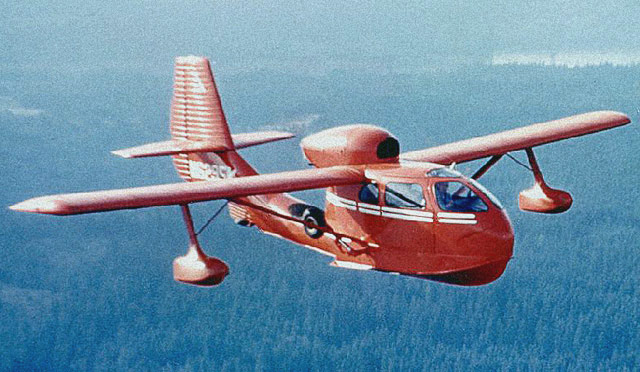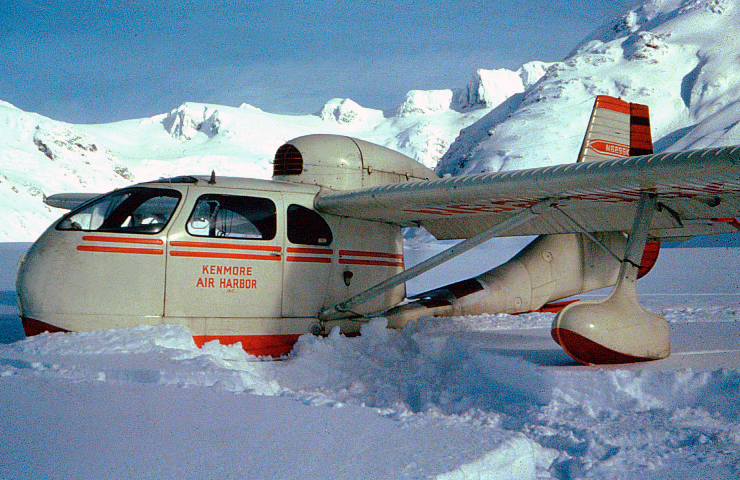|
N6295K
|
||||||||||||||||||||||||||||||||||||||||||||||||
|
AIRCRAFT DATA |
||
| Manufacturer: | Republic Aviation Corporation; Farmingdale, Long Island, New York, USA. | |
| Model: | RC-3 Seabee | |
| Type Certificate No: | A-769 | |
| Serial Number: | 508 | |
| Manufacturing Date: | 1947-03-?? | |
| Engine: | Franklin
6A8-215-B8F (215 HP at 2500 RPM) Lycoming GO-480-? |
|
| Remarks: | Extended
wings. Lycoming GO-480 engine conversion. Mode S code: 52035275 |
|
| Reg. No. | Date | Remarks |
| NC6295K N6295K |
1947-03-?? | Manufacturing Date. |
| 1947-03-?? | Test flight. | |
| 1947-03-18 | Officially delivered from Republic Aviation Corporation to Hinck Flying Service; Minneapolis, Minnesota, USA. | |
| ????-??-?? | Robert Munro; Kenmore Air, Kenmore, Washington, USA. | |
| 1979-03-27 | A/W Date. | |
| 1981-10-30 | Dr. W. Ben Blackett M.D.; 4366 North Lexington, Tacoma, WA 98407-1710, USA. | |
| 2001-03-23 | On
March 23, 2001, about 1115 Pacific standard time, a Republic RC-3
(Seabee), N6295K, sustained substantial damage subsequent to the
separation of the propeller while in cruise flight approximately 5
statute miles west of Tacoma Narrows Airport, Gig Harbor, Washington.
The airplane is owned by the pilot, and was being operated as a
personal/pleasure flight under the provisions of Title 14, CFR Part 91,
when the accident occurred. The commercial pilot, the sole occupant of
the airplane, was not injured. Visual meteorological conditions
prevailed and no flight plan had been filed. The flight originated from
Mason Lake, Washington, approximately 5 minutes prior to the accident.
The airplanes intended destination was Tacoma Narrows Airport, Gig
Harbor, Washington. In a telephone conversation with the NTSB, the pilot stated that the airplane was in a cruise flight configuration at 1,500 feet mean sea level (msl) when he observed an engine over speed condition. The pilot reduced engine RPM and executed a forced water landing near Carr Inlet. Post-accident inspection of the airplane disclosed that the airplane's propeller had separated from the crankshaft flange. The remnants of three propeller bolts were recovered; however, the propeller assembly was not recovered. The recovered pieces of propeller bolts were submitted to the NTSB Materials Laboratory in Washington, D.C. for metallurgical examination. The Materials Laboratory's factual report (Report No. 01-076, attached) noted that fractures in the bolts were found in two locations, adjacent to the underside of the head and through the shank of the bolt. All head fractures were noted to be 0.5 inch from the end of the bolt head. The shank fractures in the two recovered bolt shank sections were noted to be 1.0 and 1.1 inches from the end of the head, respectively. The fractures adjacent to the heads of the three bolts were similar in appearance, taking place on planes that initiated at opposite sides of the bolt and were oriented at a slight angle towards the bolt head. Each head fracture contain two smooth areas emanating from diametrically opposite surfaces, which met at a rough area in the interior of the bolt cross-section (typical of fatigue cracking followed by unstable crack propagation due to overstress directly before complete fracture.) In all three of the head fractures, about 80% of the fracture surface was found to be characterized by fatigue. Scanning electron microscope (SEM) examination of the head fracture surfaces disclosed that fatigue cracks initiated in multiple points on diametrically opposite sides of the bolt and propagated inwards. Examination of the shank fractures also disclosed features consistent with a fatigue cracking fracture mode followed by final fracture due to tensile overstress. As with the head fractures, the primary features of the shank fractures included a smooth (fatigue) area through approximately 80% of the fracture surface, with fatigue cracks originating from multiple locations on diametrically opposite sides of the bolt and propagating towards the interior of the cross-section. SEM examination of the shank fractures additionally detected micro-fissures typically seen in high stress fatigue cracking in steel alloys. Examination of the threads on the sides of the recovered shank pieces were flattened. In each case, approximately 4 threads were flattened over a length of about 0.2 inch. Aircraft maintenance records indicate that the aircraft's propeller was removed and replaced 2.8 flight hours prior to the accident. The propeller was removed in order to comply with AD (Airworthiness Directive) 97-18-02. |
|
| Sources | RAC
Seabee Delivery List FAA Registry Bruce Hinds John Hooper |
|

